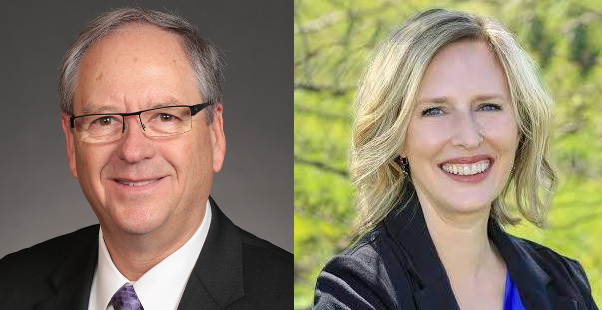Last week I discussed the strangely low fundraising numbers reported by some Republican candidates in battleground Iowa House and Senate districts. Craig Robinson of The Iowa Republican blog is worried about the “lackluster fundraising numbers of the House Republicans,” not so much by candidates running in the open seats but by the GOP leaders:
Obviously, party leaders will always prefer candidates who can raise money to fund their campaigns, but very few candidates actually raise enough money to be self-sufficient.
This means that the leadership team in both chambers must raise money to help win or protect seats. House Republicans are not hitting on all cylinders in this area. […]
At this time in 2008, [Chris] Rants’ five-person leadership team had raised over $437,000. [Kraig] Paulsen’s seven-person team has raised significantly less, bringing in $364,000.
Another problem for the House Republican effort is that two of the seven-member leadership team are facing stiff competition this fall. Representatives Renee Schulte and Dave Deyoe both occupy seats that are very expensive in which to campaign, and both will have to use every dollar that they raise on their own races instead of helping others. If Schulte and Deyoe’s fundraising totals are subtracted from the leadership team’s total, it means that Paulsen’s team has really only raised $298,000. […]
In total, the 2008 leadership team for the House Republicans raised $785,000. That means that, at this point in the 2008 election cycle, Rants’ leadership team had raised 56% of the total funds they would raise that year. If Paulsen’s crew raises only what was raised in 2008, then they are only 46% of the way there if you include Schulte’s and Deyoe’s contributions, and they are a disappointing 38% of the way there if [Schulte] and Deyoe are excluded because they have their own races to worry about.
If House Republicans want to wrestle control away from the Democrats, they need to get serious about fundraising. Legislative campaigns are expensive. The average cost of a rural House seat is $200,000, while an urban house seat can easily cost $400,000 or more. […]
Robinson also posted a table comparing Iowa House Republican leaders’ fundraising from 2008 and the current election cycle, which you can find after the jump. House district 37 (map here) is one of Iowa Democrats’ best pickup opportunities. It contains a large part of northern Cedar Rapids, ending where the suburbs Hiawatha and Marion begin. Schulte defeated first-term State Representative Art Staed by just 13 votes in 2008. Even after recent Republican gains in voter registration, registered Democrats slightly outnumber Republicans in district 37 (no-party voters have a plurality). Robinson is right: Schulte won’t be able to afford to share her campaign funds with other House Republicans, because her Democratic opponent Mark Seidl is pounding the pavement.
Deyoe’s House district 10 (map) covers most of Story County outside Ames as well as the eastern part of Hamilton County. Compared to House district 37, this is slightly more favorable terrain for the GOP, as registered Republicans outnumber Democrats. But as in many Iowa legislative districts, no-party voters comprise the largest group of registrants. Moreover, Deyoe has a more experienced opponent in Selden Spencer, who was the 2006 Democratic nominee against Tom Latham in the fourth Congressional district. Both Spencer and Deyoe have just under $26,000 cash on hand, according to the July 19 disclosure reports.
I hadn’t realized before reading Robinson’s post that Iowa House GOP leaders were not keeping up with the party’s fundraising pace in 2008, but that’s not surprising. Ask any professional working in the development field: the recent recession and stock market declines make it more challenging to raise money now than in 2008. In addition, Republican statehouse leaders had much less competition for donors two years ago. The statewide offices weren’t on the ballot, and John McCain had a small donor pool here, having mostly bypassed the Iowa caucuses. Now Terry Branstad and to a lesser extent Brenna Findley are raising big money from the same people Paulsen needs to tap for the House races.
Share any relevant thoughts in this thread. If you can afford to do so, please donate to one or more Democrats running for Iowa House. You can give online through ActBlue or the candidates’ official websites.
Continue Reading...









